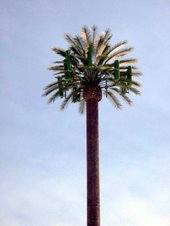Definitely, if you drop your RAZR or PEBL into your frappaccino.
But, consider another situation.
You're at a conference with three hundred strangers, and you're anxiously checking your watch, waiting for the speaker to announce the morning break so you can call your office to check your messages.
Finally, the speaker says "It's 10:30. Let's take a coffee break and reconvene in fifteen minutes."
You follow the rush of people out into the hotel lobby, and you quickly whip out your phone, only to see a message flash across its cellular screen: Denial of Service.
It seems that you weren't the only one wanting to make a call. A number of other attendees were trying to do the same thing, resulting in hundreds of cellular phone calls trying to be placed from the same location, all at the same time. This spike in useage overloads the local wireless network, causing it to crash--hence the Denial of Service beacon you see flashing on your phone's display.
That's how, in the end, coffee can be bad for cell phones.
However, it is exactly this type of situation that prompted the need for smaller cellular base stations--picocells, as they're called--to serve busy areas of population clusters like hotel conference rooms. They are also used in airport concourses. Early airport installations began in 2000 in high-tech locales like Seattle, Austin and Dallas. Today, about 100 North American airports have wireless coverage. Back during the dot-com boom, Nokia installed Wi-Fi (wireless Internet) service to airports from Ottawa to Vancouver and Denver without having a permanent operator in place to handle the actual service.
Cellular technology is converging to a point in the not-too-far-off future where our wireless calls will switch between the outside CDMA or GSM cellular network to an in-building VoIP (voice over the Internet Protocol, like Skype or Vonage) network seamlessly. In fact, there are phones on the market now with WiFi capability. T-Mobile's new phone called the Dash comes equipped with WiFi, enabling it to connect to any of T-Mobile's 7,836 hot spots around the country.
In the future, there will be more convergence, as more services are added to cell phones, eventually reaching a point (probably around 2025) when wireless connectivity will seem mundane. We will be able to wirelessly communicate, share, chat, and download pretty much whenever and wherever we want.
But in the meantime, the clock is ticking on your coffee break, and you've got business to attend to. You walk out to the street, and notice that you now have five bars, indicating a full-strength signal.
Put that coffee away. It's time to get busy.
Tuesday, March 13, 2007
Can coffee be bad for your cell phone?
Labels:
conference,
convergence,
municipal wifi,
Skype,
T-Mobile,
Vonage
Subscribe to:
Post Comments (Atom)

No comments:
Post a Comment